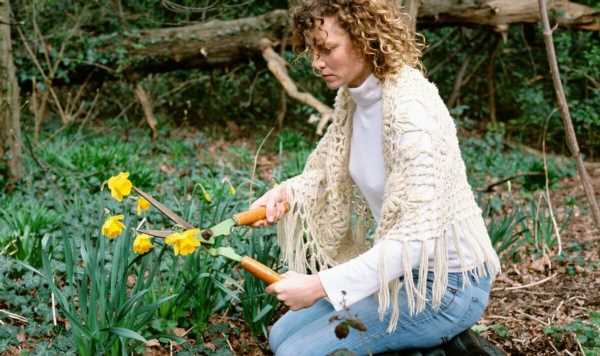Gardening: Expert demonstrates how to deadhead flowers
Deadheading is the gardening term used for the removal of faded or dead flowers from plants. Deadheading is generally done both to maintain a plant’s appearance and to improve its overall performance.
It is an important task to keep up within the garden throughout the growing season as most flowers lose their attraction as they fade, spoiling the overall appearance of a garden or individual plants.
As flowers shed their petals and begin to form seed heads, energy is focused on the development of the seeds, rather than the flowers.
Regular deadheading, however, channels the energy into the flowers, resulting in healthier plants and continual blooms.
Many gardeners often confuse deadheading with pruning as they both involve removing an area of a plant, but there is one major difference.

Unlike pruning, which involves removing any part of the plant, deadheading calls for removing just the buds.
To find out how to correctly deadhead plants one gardener has taken to the Gardening UK Facebook page to ask for some top tips. Simon Fleet wrote: “I don’t want to sound silly but how do I correctly deadhead my plants and flowers?”
While gardeners don’t have to deadhead their flowers, doing so will encourage new flowering stems to emerge.
In the comments section group members suggested either gently pinching off the spent flowers or using a pair of secateurs to cut off those that are more tough.
Joy Pearson said: “Just pinch them or cut them just under the flower. Be careful with rhododendrons as the new shoots are just under the flower head.”
Don’t miss…
Four ‘effective home remedies’ to kill bed bugs and ‘eliminate an infestation’[INSIGHT]
Gardeners share the ‘best’ tip to ‘salvage’ wilted hydrangeas for great results[EXPERT]
‘Unwelcoming’ front door colours to ‘avoid’ that risks your home ‘looking dated’[COMMENT]

Ellena Kirk explained: “The point of deadheading is to stop the plant from making seeds. Plants flower to make seeds and reproduce. Flowers generally sit above a swelling at the top of the stem which is where the seeds would be formed, so that’s what you need to remove.
“The petals will fall off by themselves usually, so taking them off just tidies the plant. I generally snip further back so as not to leave random stems sticking up.”
Basia Walus wrote: “The best way which should work with nearly all plants is to either cut off or pinch off the flower just below the head. Just be careful with plants where a bud is very close to the spent flower, it might be worth not doing those if there is a risk of damaging the bud.
“Once you get experience and you observe where the new flowers come from, you can cut to that point, for example, the closest leaf joint.”
We use your sign-up to provide content in ways you’ve consented to and to improve our understanding of you. This may include adverts from us and 3rd parties based on our understanding. You can unsubscribe at any time. More info

Gary Davies said: “The correct way is to pinch off the flower gently, or for some more woody material, use secateurs to cut off flowers. This will result in flowers being longer lasting.”
Deepti Prasad advised: “Pinch off the soft flower at the stalks or use secateurs for the hard-stemmed ones. Never tug or pull.”
Cherry Treglown replied: “They snap off naturally where they should. Or clip carefully to prevent other bud damage. You are preventing the seed pod from growing as this takes a lot of energy and they stop flowering because they have achieved reproduction. So by deadheading, the plant needs to produce more flowers to reproduce. Different on every type you will get a feel for it.”
Sue Kaskin wrote: “I usually pinch them down to the next set of leaves.” Margaret Brookes added: “I use snip it with mini scissors as I find them ideal for deadheading.”
Source: Read Full Article
